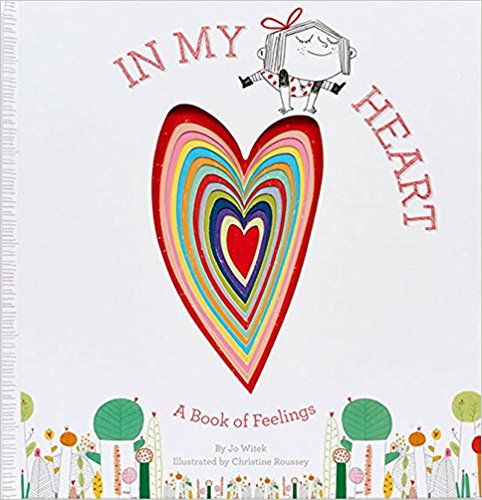Featured Children's Book:
This is a creatively illustrated book about emotions with 3D cutouts that will engage your child to talk more about his or her feelings. A great training tool for introducing emotional intelligence (E.Q.) concepts to your young children. Ages 2-6.
See sample processing questions below.
Processing questions for parents (In My Heart book):
1. As you read through the pages of emotions, ask your child an example of when they feel happy, brave, etc. What is happening? Who are they with when they feel that emotion?
2. Ask them the last time they felt mad or sad. How did they know they were feeling mad or sad? What happened in their body? Did the feeling eventually go away? What can they do next time they feel that way? By asking them to problem solve for a 'next time' engages their frontal lobe to do some forward thinking which will help to increase their emotional intelligence.
3. Sometimes it is helpful to pause the book when it addresses feeling calm. With your child, take a deep breath in through your nose for a few seconds, then slowly let the breath out through your mouth as if trying to blow bubbles out of a wand very slowly. Ask them how their body feels after doing this a couple times and see if they feel calm. This helps them become more aware of their body sensations and connects them with the language to express it.
4. Another step of E.Q. is to recognize the emotions of others. Help them think about a time when a friend was feeling sad. How did they know they were feeling sad? What could they do to help? *Note: It's helpful to practice saying to your child "feeling sad" rather than "being" sad. Talking to them in this way trains them to understand that although they are experiencing sadness, they "themselves are not sad". The feeling will soon pass away. It externalizes the emotion so they don't have to "BE" that emotion forever; which some children are afraid of when experiencing an intensely strong emotion.
5. Remind your child that feelings are not good or bad; they just simply are. Your child has a choice of how to act on the emotion, and that behavior or decision can be good or bad. Feeling sad, mad or scared is not inherently bad, though dwelling on the emotion can be harmful. Try to NOT label your children as being bad when acting out but instead explain to them that they are good and loved always but are making bad decisions that you are not happy about at that moment.
6. Finally, soak up that quality time you are having with your child even if talking about emotions feels a little awkward to you. Tell yourself, "this moment is so special and unique. I may not have many opportunities like this in the future unless I work at making the time to do so." Focus on how your child is responding to you and just enjoy the present moment. If your child seems disinterested, do not give up. Roll with their distractions, have fun and try again another time.
~ Krystin Henley

